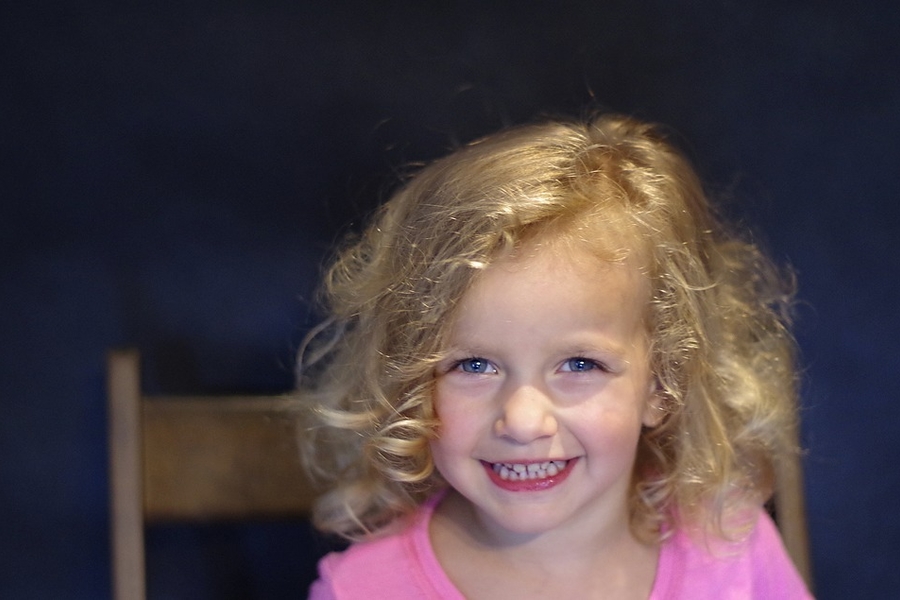
Hair Twirling Disorder In Children
4 Sep 2018 | 4 min Read
Babychakra
Author | 1369 Articles
We often see little kids biting their nails, sucking their thumb, twirling their hair, or banging their head against something when they are stressed out, bored, or angry. Although these habits may seem to be quite harmless, parents often get concerned when these habits continue in their children after they turn four or five.
Hair-twirling is one such self-comforting activity that many little kids engage in to let out their built-up energy, stress, and anxiety. Some kids also practice this before bedtime as it helps them relax and fall asleep quickly. Kids twirl their hair out of boredom too.

If the little ones are seen twirling their hair quite often, it is important to observe them closely and understand why they are engaging in this behaviour and try to help them with their hair twirling disorder.
So Is This Normal?
As a self-soothing behaviour, hair twirling is completely normal for toddlers, and most of them outgrow this habit by the age of three or four. In case the behaviour persists, it could be that they have a hair twirling disorder. If the toddler refrains from talking and stays occupied in other similar self-calming activities, then it is best to seek a paediatrician’s advice.
How to Keep It Under Check?
If you are worried about seeing your little ones twirling their hair, here are some approaches that may help curb the behaviour:
Keep Stress and Anxiety at Bay
Kids usually engage in hair twirling when they are anxious and stressed, and view this behaviour as an outlet to release their pent-up energy. Engaging them in other physical activities, such as playing, dancing, singing, colouring, and the like will keep them occupied and prevent them from twirling their hair now and then.
Do not Force them to Stop
Often, kids tend to do the exact opposite of what their parents ask them to do. Scolding them or forcing them to stop the habit will either make them cranky or instigate them to repeat the behaviour often. Instead, talk to them about it and more importantly, pay attention to what is going on at home that may be stressing your little one out.
Is it because of the arrival of your new baby, parents quarrelling frequently, change of caretaker, or something else? Take care of such concerns, if there are any!
Find Ways to Kick Anger Away
If you have noticed that your little one resorts to hair twirling when they are nervous or angry, try seeking a solution for this kind of behaviour. Giving them a soft toy or a doll with long hair may help, as your little one becomes busy playing with the doll’s hair and give up on twirling their hair gradually. Some kids release their anger by banging on a toy drum or wrestling with a stuffed toy, so trying these alternatives can help keep their hands off their hair.
Try a Soothing Routine
A comforting activity or a regular bedtime routine will soothe the child and keep the hair twirling disorder arising out of anxiety from developing. This may include reading a story, listening to rhymes or soft music, or just talking to your little one casually.
Cut the Hair Short
If your child does not stop twirling their hair even after trying all possible tricks, cutting the hair short is a good option. Shorter hair is difficult to twirl, and your little one will give up on the habit eventually.
Help your Little One Break the Habit
If you are anxious about your child’s hair twirling disorder, don’t worry too much and give your little one some time to grow out of it. Do not draw more of your child’s attention to the habit by scolding them or stopping them forcibly. If nothing works and the hair twirling disorder persists, try seeking professional advice.
A


Related Topics for you
Suggestions offered by doctors on BabyChakra are of advisory nature i.e., for educational and informational purposes only. Content posted on, created for, or compiled by BabyChakra is not intended or designed to replace your doctor's independent judgment about any symptom, condition, or the appropriateness or risks of a procedure or treatment for a given person.
